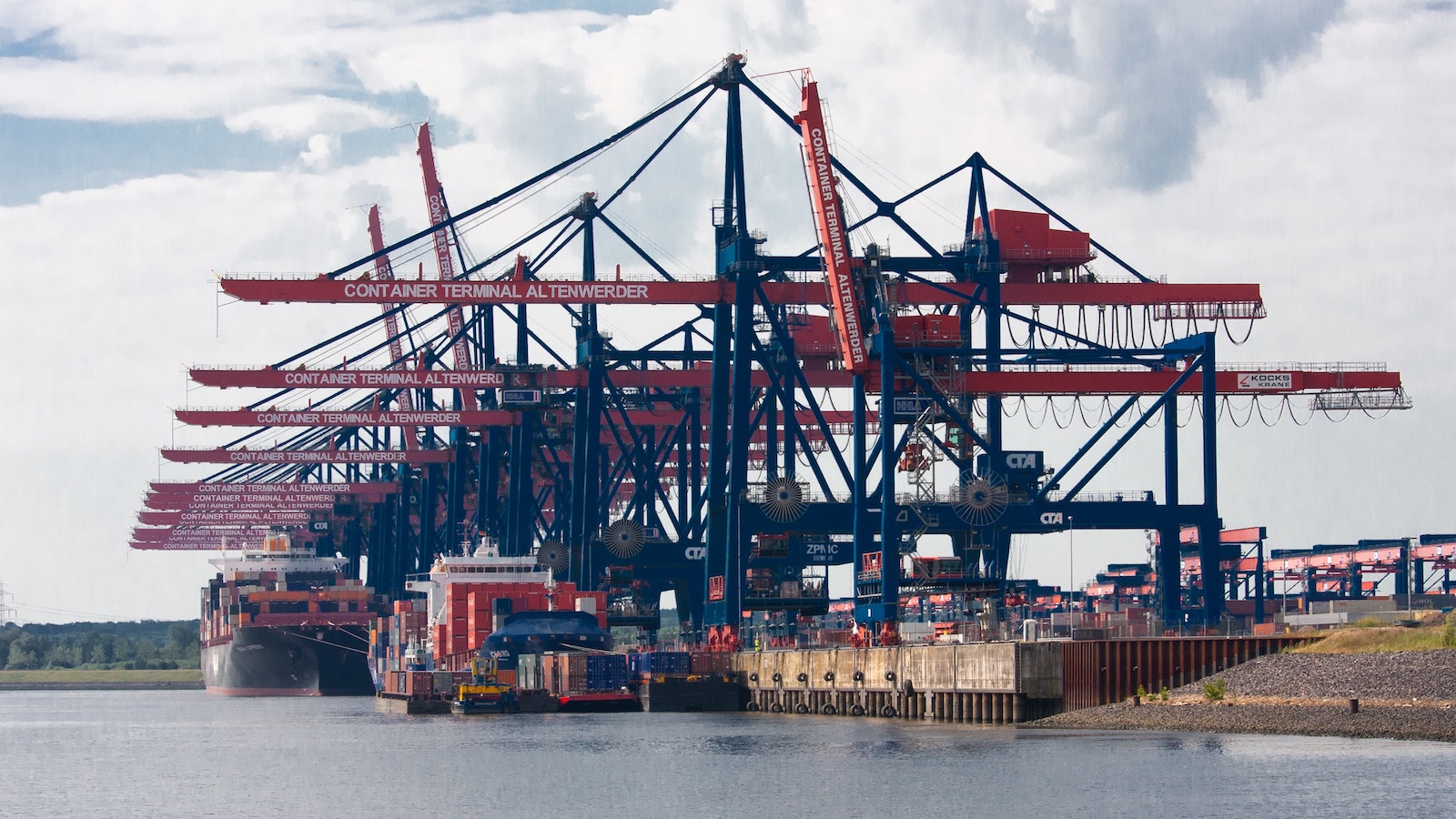Table of Contents
** Minutes
What is the Harmonized System (HS)?
What are Harmonized Tariff Schedule (HTS) codes?
How to avoid the most common HTS code issues
Many ecommerce businesses dream of expanding their reach internationally. For some, the dream is often far-fetched because there are so many processes and considerations involved – from shipping and warehousing to customs and tariffs. All of these factors can make selling internationally seem like an intimidating process.
Fortunately, the Harmonized System (HS) makes it easier to navigate the complexities of custom duties and taxes. Once you understand this system, it’s all a matter of finding the right Harmonized Tariff Schedule (HTS) code for your international shipments.
In this post, we’ll take a closer look at what HTS codes are, how they work, how to find them, and how you can avoid the most common issues associated with HTS tariff codes.
How to look up HTS codes
While HS codes are universal, HTS codes will vary depending on the country of import. This is because countries have the freedom to add further classifications to the standard HS code, and each country may have a different categorization procedure. So it’s important to ensure that you’re looking up the right HTS codes based on the country you’re importing to.
Looking up U.S. HTS codes
If you’re importing goods into the U.S, you can use the free Schedule B search tool from the U.S Census Bureau to look up the correct HTS codes. The tool will ask you to describe your product and provide you with several auto-fill suggestions. You can choose more info about the product to narrow down on the right chapter and schedule B number.
However, some products are difficult to classify. You can use the Customs Rulings Online Search System (CROSS) database to find the appropriate HTS code. If you’re still having trouble identifying the HTS code for your product, consult an expert. You can either check with your local Commercial Service International Trade Specialist or a commodity specialist at the Foreign Trade Division of the Census Bureau.
Looking up international HTS codes
International HTS codes are usually available to access from the government website of the relevant country. For example, you can find Canadian HTS codes on the official Canada Border Service Agency website. And for Japan, you can find these codes on the official Japan Customs and Tariff Bureau website. You just need to find the appropriate government body depending on which country you’re importing to.
If this information is not available on these websites, see if it’s listed on the website of reliable postal services in the importing country. This information would usually be available with the respective government postal service. In addition, there are plenty of additional resources online that can provide you with the correct info on international HTS codes.
What is the Harmonized System (HS)?
The Harmonized System is the global system of nomenclature applied to cross-border trade, as administrated by the World Customs Organisation (WCO). The HS standardizes the coding commodity system and serves as a foundation for classifying imports and exports.
The Harmonized System (HS) codes consist of six digits and are assigned to all physical commodities that are undergoing global trade.
What are Harmonized Tariff Schedule (HTS) codes?
Harmonized Tariff Schedule of the United States (HTS) codes are a product classification system made up of 8-to-10-digit codes for organising internationally traded goods. These codes help determine the duties and taxes for imported products, which makes it important for traders to know and use the correct HTS codes.
How do HTS codes work?
The use of HTS codes helps to streamline the process of applying import duties and taxes accurately. Besides assisting the customs clearance process, these codes are also useful for classifying products appropriately so they can be neatly categorized in a worldwide system.
The structure of an HTS code
HTS numbers typically consist of 8-to-10 digits depending on the country. For example, the U.S uses a 10-digit HTS code called the Harmonized Tariff Schedule of the U.S (HTSUS). The first six digits are the universal standard HS number, which is recognised in a majority of international trade for classifying imported commodities. The remaining digits are additional subheadings used for further classification and establishing appropriate duty rates.

For example, the HTS code for perfumes and toilet waters containing alcohol is:
3303.00.30 00
- Here, the first two digits “33” are the chapter. In this example, Chapter 33 is for Essential Oils and Resinoids, Perfumery, Cosmetic, or Toilet Preparations.
- The next two digits are the heading, which indicates the specific category under a chapter. In this example, “03” is the heading for perfumes and toilet waters.
- The two digits coming after that are the subheading to classify product types. For this example, there are no additional product types so it remains as “00.” Under some categories, you may have subheadings like “10” for lip make-up preparations and “20” for eye make-up preparations and so on.
- Next, you have two more digits to specify a characteristic of the product type. For example, “30” is the subheading for perfumes and toilet waters that contain alcohol. The subheadings “10” and “20” are assigned to alcohol-free preparations of this product category.
- The remaining two digits are additional suffixes, which may be used for collecting trade data. In this example, the suffix is at “00” because it’s not required for this product category.
How are they used?
Importers and exporters alike have a legal obligation to ensure that their goods are properly classified using the correct HTS code. Before products are shipped out for cross-border trade, the shipper must lookup the HTS codes from the HTS code database and assign it to the products to avoid major problems once the goods reach the destination country.
As such, you need an HTS code to complete essential shipping documentation such as certificates of origin, commercial invoices, packing lists, shipping bills, and letters of instruction. Businesses that are shipping goods from the U.S also need this code to report their shipments in the Automated Export System (AES). However, this step is only necessary in case of goods that require a license or are valued at over $2,500.
The HTS code also helps customs officials to determine the appropriate duty rates that must be paid. Check out our page on DDP shipping and import duties for more info. In the case of certain products where there’s a free trade agreement between the import and export countries, the code also helps to establish that they’re eligible for a preferential tariff.
How ShipBob simplifies selling and shipping internationally

With so many things to consider and compliances to follow, international shipping can be a major headache when you’re growing your business internationally. High costs, confusing processes, and lack of resources have stopped many ecommerce businesses from expanding globally. ShipBob simplifies it for you by taking care of your entire international logistics through a global fulfilment network and sophisticated technology.
ShipBob helps you minimise your overall costs with reduced shipping rates that are negotiated for you. This addresses one of the major obstacles related to cost that might be preventing you from selling internationally.
Moreover, our strategic locations ensure that you can provide affordable and fast delivery experiences even to international customers. By storing your inventory in our international fulfilment centres, you can cut down transit times and minimise delays due to customs clearance procedures.
Most importantly, ShipBob takes care of the complicated and time-consuming administrative tasks that come with international ecommerce selling. Now you no longer have to stress about paperwork, HTS codes, and customs compliance issues because ShipBob manages it all for you. This significantly simplifies and streamlines global shipping and makes it easier to grow your business internationally as you can focus on acquiring and retaining customers.
ShipBob offers solutions, such as:
- International shipping to over 250 destinations worldwide.
- DDP shipping to improve the customers’ cross-border shipping experience.
- A global fulfilment network with over 50+ facilities in the US, Canada, UK, EU, and Australia.
- Strategic fulfilment centre locations that allow you to distribute inventory so you’re closer to your end customer’s destination.
- Best-in-class technology and analytics that allows you to monitor and manage inventory and orders from one intuitive dashboard.
How ShipBob enables Ombraz to sell internationally

For Ombraz, a successful crowdfunding campaign saw them shipping their armless sunglasses to 55 different countries in addition to all 50 U.S. states. This meant that international shipping was a high priority for the brand. However, shipping costs and unexpected duties could result in a lot of barriers to purchase.
When ShipBob began expanding to Canada and Europe, Ombraz immediately leveraged the expanded fulfilment network for an opportunity to reduce taxes and tariffs. This helped them to reduce barriers to purchase as Canadian and European customers can now get their orders in a few days or less without spending extra money on duties and taxes.
With ShipBob managing all the administrative tasks, the brand was able to enjoy a much more streamlined international shipping experience.
We found that sending inventory to Europe involved less paperwork and was faster than expected. The process of getting inventory sent to ShipBob’s fulfilment centre location in the EU was very streamlined.
Nikolai Paloni, Co-Founder of Ombraz Sunglasses
Utilise ShipBob’s international fulfilment network and resources to make your brand’s international shipping a breeze. Request a quote below to get started.
HTS codes FAQs
Here are answers to the most common questions about HTS codes.
What does HTS code stand for?
HTS code stands for Harmonized Tariff Schedule. It is used to classify imported products and determine appropriate duties.
How do you read HTS codes?
Reading HTS codes involves understanding the structure of the code. The first two digits are the chapter where the code is listed. The next two digits are the heading to indicate a category under the chapter. You can use the two digits after that to decipher the subheading that indicates product type, with the following two digits specifying product characteristics. Countries may also include additional suffixes after that for collecting trade data.
Do I need an HS tariff number?
An HS tariff number is mandatory for all shipments that are crossing international borders. You’ll need to include the number in your shipping documents such as the shipping bill, packing list, and commercial invoice.
What information does the HTS provide?
The HTS code provides information about the category and subcategory of a product. It may also include further information about ingredients and characteristics. Additionally, an HTS code provides information about applicable tariffs and whether or not the product is eligible for a preferential tariff under a free trade agreement.
How do I find the Schedule B number?
You can use the Schedule B search tool from the U.S Census Bureau to find the appropriate Schedule B number. To use this tool, you need to describe your product and select additional characteristics to narrow it down to the right number.
Are HS and HTS codes the same thing?
HS and HTS codes both serve the same purpose – they help classify commodities in international trade. The main difference is that the HS code only consists of six digits whereas the HTS code includes additional 2-4 digits after the HS code to further classify the product.
How do I avoid common HTS code issues?
To avoid overpayment or underpayment of duties, wrongful usage of free trade agreements, and audit referrals and steep penalties from U.S. Customs and Border Protection (CBP), you want to avoid HTS code issues. You can do this by providing the correct HTS codes (ecommerce brands are generally responsible for providing HTS codes because they import the items) using the Customs Rulings Online Search System (CROSS) database.
Finding the proper HTS code for each SKU can be tedious. You can leverage a third-party logistics company to help you automate this process.



